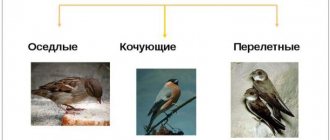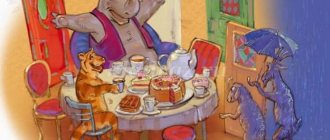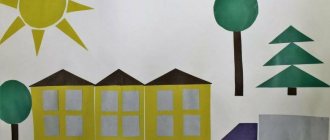Card index of didactic games on the topic: “Wintering birds”
Transcript
1 Card index of didactic games on the topic: “Wintering birds” 1. Word game: “The birds have arrived.” Goal: Develop auditory attention, activate vocabulary on the topic “Birds”. Description: The teacher names the birds, but makes mistakes. Children should notice the mistake and react by clapping, stomping, etc. Birds have arrived: pigeons, tits, flies and crows... pigeons, tits, storks, crows, bullfinches, macaroni... pigeons, tits, mosquitoes, magpies, cuckoos... pigeons, tits, storks, cuckoos, owls, buns, swans, starlings Game exercise "In the winter dining room." Goal: To consolidate children's knowledge about wintering birds and their names. Develop the ability to imitate their habits. Equipment: Silhouettes of birds, a branch on a stand, a feeder. Description: The teacher fixes the silhouette of a bird on a branch and draws the children’s attention to which bird flew to the feeder. He offers to name her and show how she screams. Children name birds, imitate their sounds, depict how they fly and jump.
2 3. Speech game “Who gives what voice?” Goal: To strengthen children’s ability to imitate birds. Description: Children are divided into pairs. The first child imitates the voice of a bird, the second child guesses what kind of bird it is. 1st child: “Tweet-chirp”, 2nd child: “It’s a sparrow tweeting.” 4. Game “Flies, doesn’t fly.” Goal: To develop auditory attention in children and cultivate endurance. Description: Children sit in a semicircle, placing their hands on their knees. The teacher names the objects and asks: “Does it fly?” (“Does a dove fly? Does a plane fly?”). If an object that flies is named, the children raise their hands. If a non-flying object is named, you should not raise your hands. 5. Ball game “Give me a word.” Goal: To develop auditory attention in children, to activate the verb dictionary on the topic. Description: The teacher throws a ball to the child and names a bird. The child catches the ball, returns it to the adult and pronounces the appropriate verb. Dove (coos). Cuckoo (cuckoos). Crow (caws). Sparrow (chirps). Tit (squeaks). 6. Exercise “Complete the sentences.” Goal: Development of thinking, activation of the dictionary of antonyms, development of the ability to coordinate nouns with pronouns in gender and number. Description: The teacher begins a sentence, the child selects the appropriate word and finishes the sentence. The sparrow is small, and the stork... The crow is large, and the tit... The owl sleeps during the day, but hunts. The tit has a short tail, and the magpie... The woodpecker has a long beak, and the bullfinch... The tit has a thin beak, but the woodpecker has a large crow, and the sparrow
3 Which of the wintering birds can you say about? Mine - (woodpecker, bullfinch, sparrow, dove), Mine - (crow, tit), Mine - 7. “Where is which bird?” Goal: To develop the ability to recognize wintering birds and migratory birds, to name them correctly; develop the ability to navigate in space, using in speech the concepts “above”, “below”, “left”, “right”, “between”, “under”, “above”, “on”. Equipment: Scene picture “At the feeder”. Description: The teacher invites the children to look at the birds that have flown to the feeder and name the birds that are to the left of the bullfinch, sitting under the roof, on the roof, between the magpie and the bullfinch, located under the sparrow, etc. 8. Game “Who’s missing?” Goal: To develop the ability to form nouns in the genitive case; development of memory, visual perception. Equipment: Subject pictures depicting wintering birds. Description: 5-6 pictures of wintering and migratory birds are laid out on the board or table, and children are asked to name all the birds and remember them. Then the children close their eyes, at which time the teacher removes one of the pictures. Children open their eyes and name which bird is gone. 9. Game “Recognize the bird by its silhouette.” Goal: To help consolidate children’s knowledge about wintering and migratory birds, to practice their ability to recognize birds by their silhouette. Description: Children are offered silhouettes of birds. Children guess the birds by naming whether the bird is migratory or wintering. 10. Game “Wintering and migratory birds.” Goal: To strengthen children’s ability to classify birds by migratory and wintering species. Description: Birds are located on two circles: bullfinch, starling, tit, sparrow, rook, cuckoo, woodpecker, swallow, crow, nightingale. The children's task is to place migratory birds in a circle with the sun, and wintering birds in a circle with a snowflake. 11. Speech exercise “Say kindly.” Goal: To strengthen children’s ability to form nouns and adjectives with diminutive meanings.
4 Sharp beak - sharp beak Thin paws thin paws Long neck long neck White chest white breast Black wing little black wing 12. Guessing riddles: How can we forget: They could fly away, But they stayed to winter Together with people. Their food is not rich, they only need a handful, a handful of grain and they are not afraid of winter. (Wintering birds) A small bird has legs, but cannot walk. Wants to take a step. It turns out to be a jump. (Sparrow) Chip-tweet! Jump to the grains! Peck, don't be shy! Who is this? (Sparrow) Motley fidget, Long-tailed bird, Talkative bird, The most talkative. The White-sided Prophet, And her name is (Magpie) What kind of table is this among the birches in the open air? In the frost he treats the Birds with grain and bread. (Feeder) Kar-kar-kar! Kar-kar-kar! That's the whole repertoire. Announces the maple crown with His singing (crow) Red-breasted, black-winged, Loves to peck grains, With the first snow on the mountain ash He will appear again. (Bullfinch) They don’t fly to a warm land, They sing in the cold, These small birds are called (titmouse). Even though I’m not a hammer I knock on wood: I want to explore every corner of it. I walk around in a red hat and I’m a wonderful acrobat. (Woodpecker) Flies all night, catching mice. And it will become light. He flies into the hollow to sleep. (Owl)
5 13. Folk wisdom on the topic “Wintering birds”: A forest without birds and birds cannot live without a forest. The bird knows that it is no good without the Motherland. Every bird is proud of its feather. Every bird sings in its own way. Every bird is fed with its beak. Each bird has its own habits. The sparrow immediately takes off, but the rook needs a run. A crow cannot be a falcon. The little crow's nest is his home. The titmouse is small, but its claw is sharp. The tit eats a little, drinks a little, and lives happily. A magpie doesn't chirp for no reason. The magpie brought the news on its tail. Owls and owls feast in the night. The sparrows are under the roof, and the owls are out to catch. The nightingale sings for a month, and the crow croaks all year round. The cuckoo crows and mourns about the house. No matter how much the cuckoo crows, it will fly away by winter. The material was prepared by teacher-speech therapist Efremova S.E.
- how many people are infected with coronavirus today in Russia number of infected today



